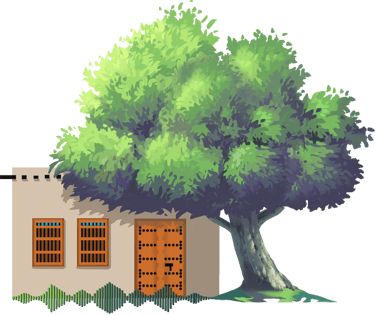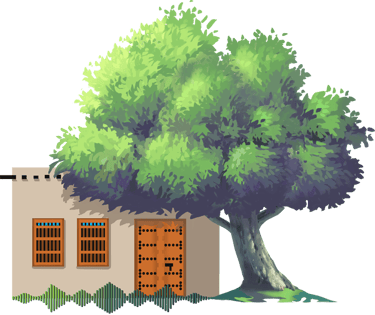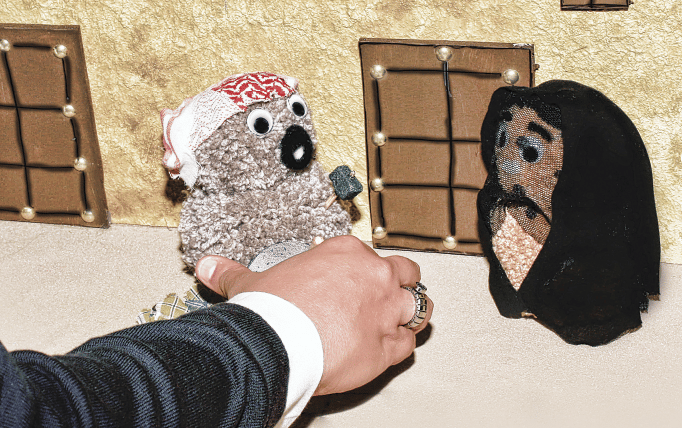The Old Kuwaiti House
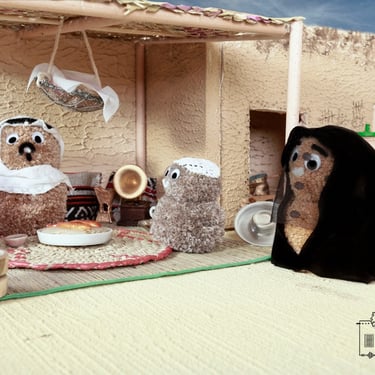
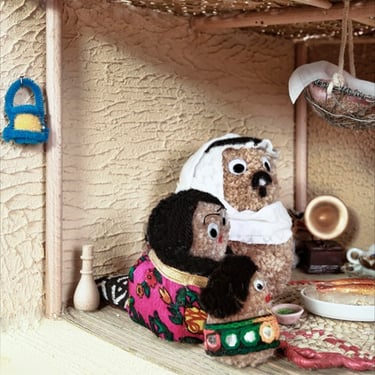
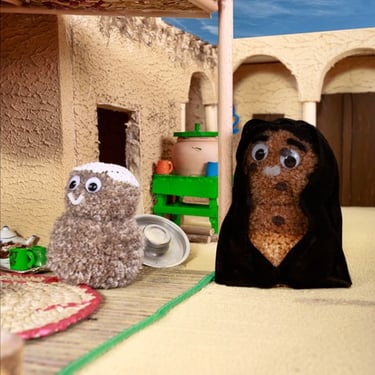

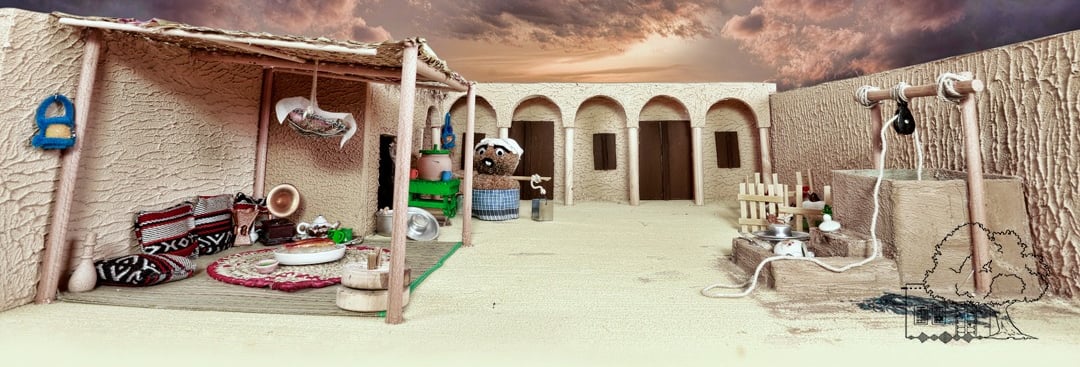

Sheep Pen

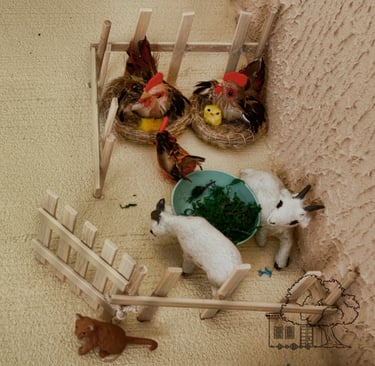
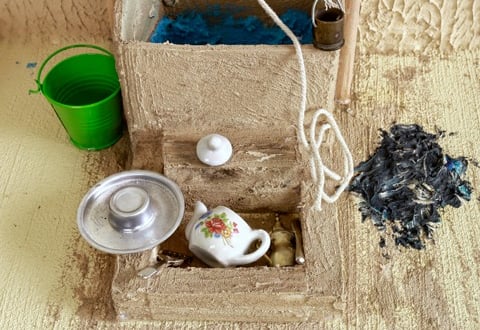

Sink
The Old Kuwaiti Wedding
:الدزة (Dazza (Dowry
The groom's family prepares the dowry, which is made up of a dowry whose value varies according to the bride's financial situation. The "bagsha" is part of the dowry and contains six to seven pieces of cloth and two abayas, in addition to jewelry, bed sheets, towels, and other wedding necessities. On the day of presenting the dowry (bagsha), it was customary for the groom's mother to go with her village and some women relatives to the bride's house to present the dowry.
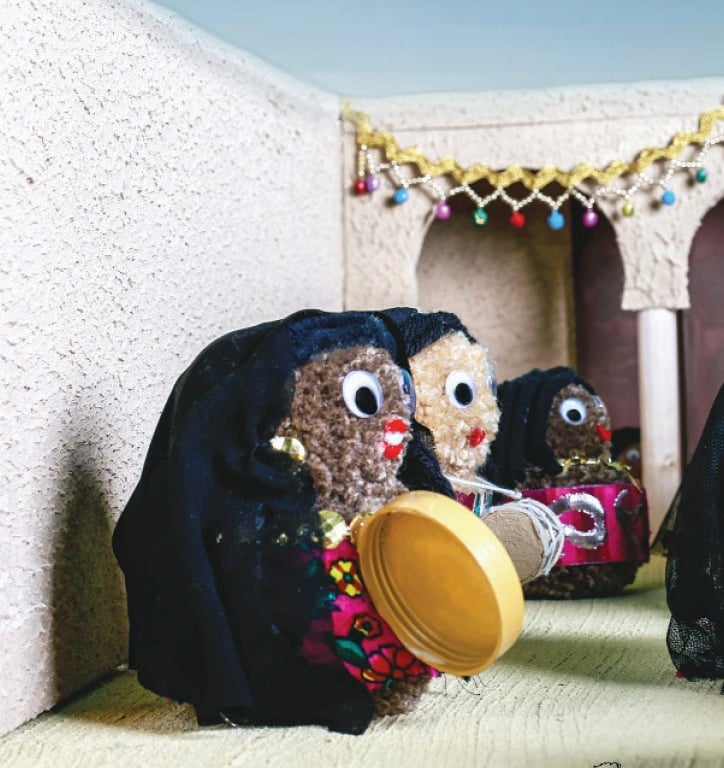
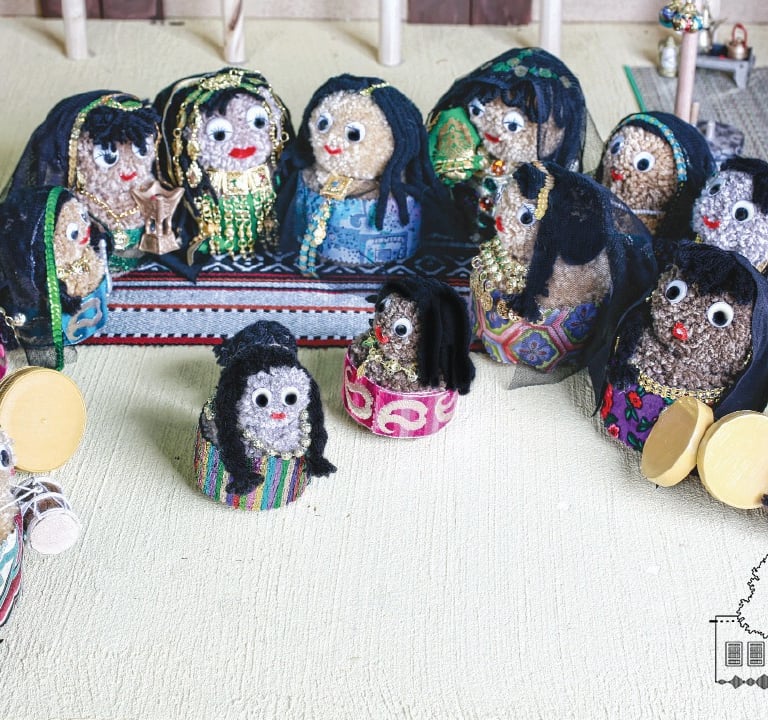
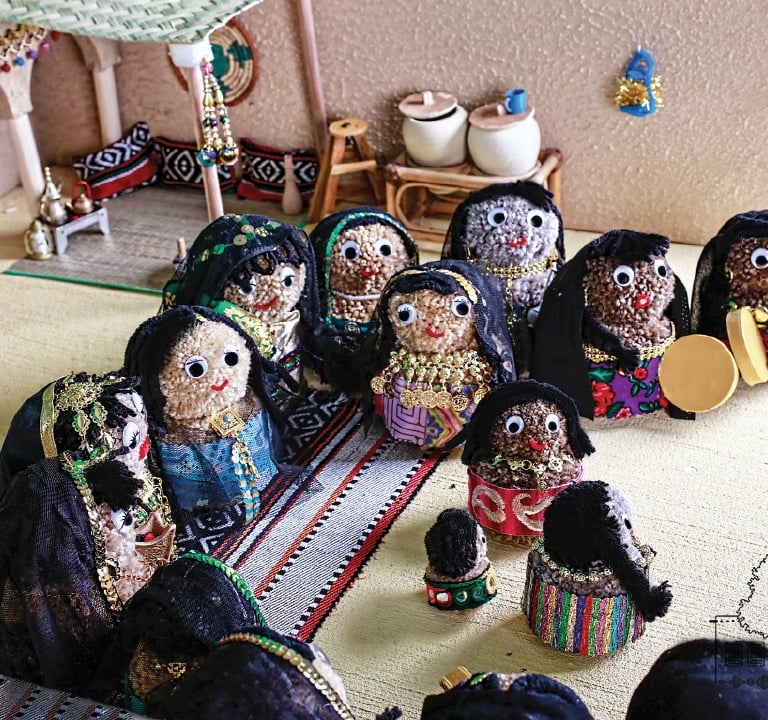
Al-Jalwa (Al-Liwa):
The wedding night is the night of a lifetime that every girl waits for, as they say. In the past, the preparation and outfitting of the bride in Kuwait was known as Al-Jalwa or Al-Yalwa in the Kuwaiti dialect. At sunset, the henna night ceremony begins, and a large number of the bride's relatives gather. Al-Jalwa is a collection of songs and chants accompanied by prayers sung by women during Al-Jalwa to celebrate the bride. The bride sits on a chair after wearing a bright green dress with full jewelry and gold. Four women come with a large square piece of green cloth decorated with gold threads and on it some phrases such as "May happiness come" and other phrases. Each of these four women holds an end of the cloth and lowers it over the bride's head, chanting this chant that contains praise and prayers for the bride. The women chant:
They chant:
امنيه في امانيها
مليحه في معانيها
تهلت واحده حلوه
سالت الله يهنيها
جنينتها فوق الثرى
وردها يشفي امراضي
لها رب السلايل
واحسن في معانيها
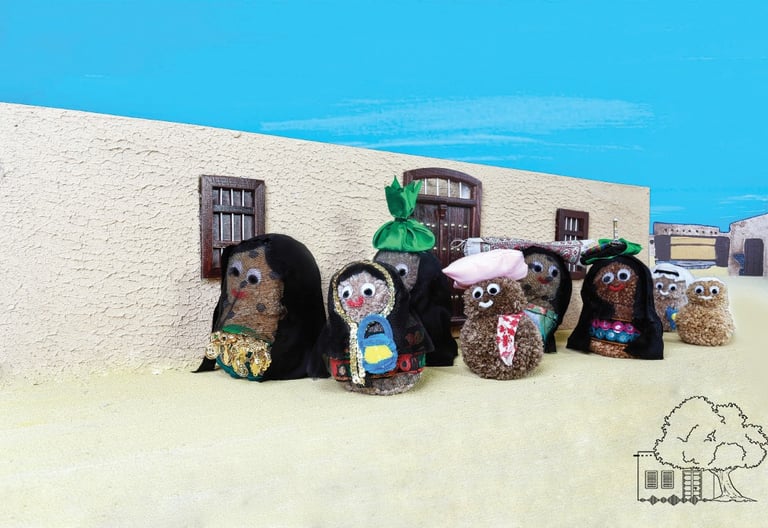

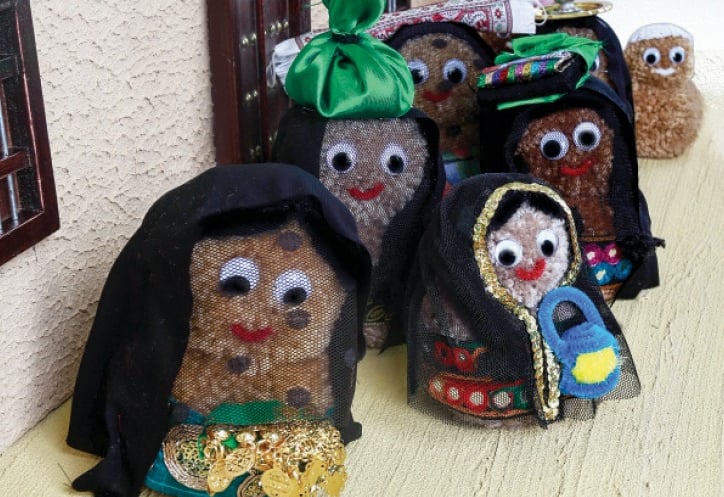

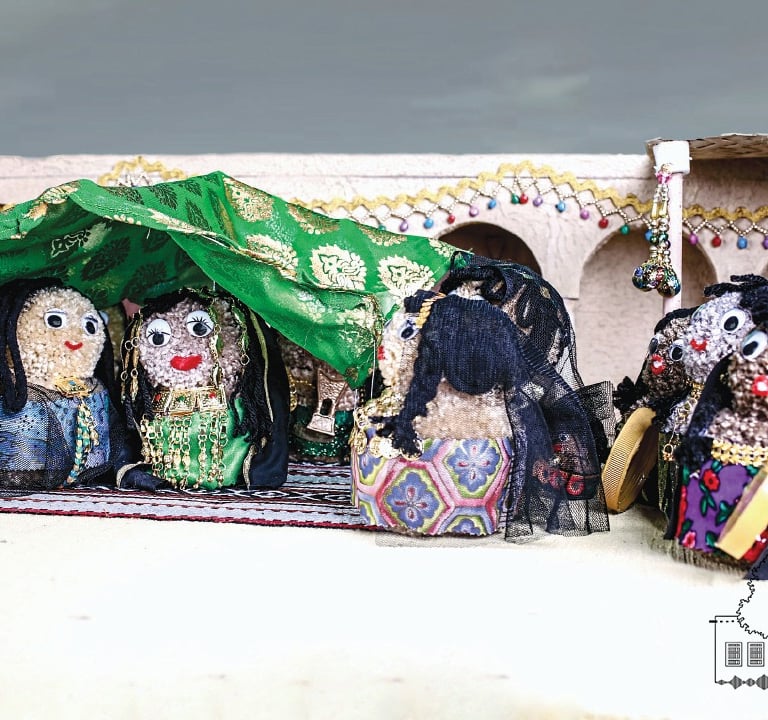
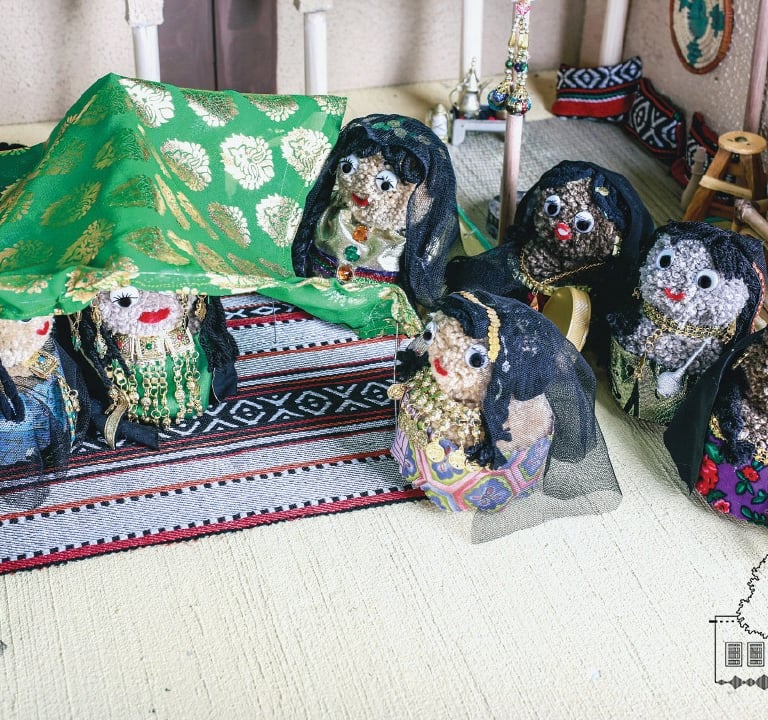

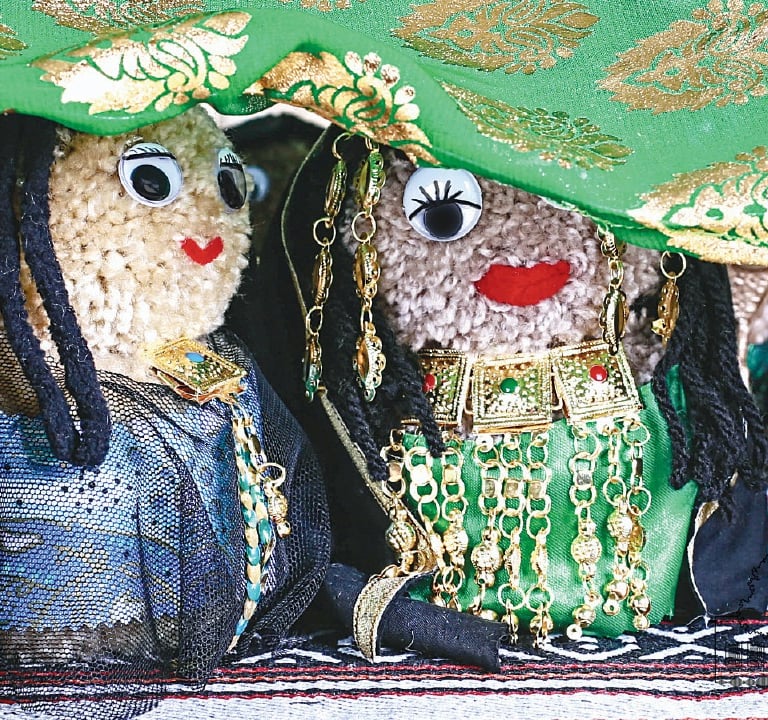
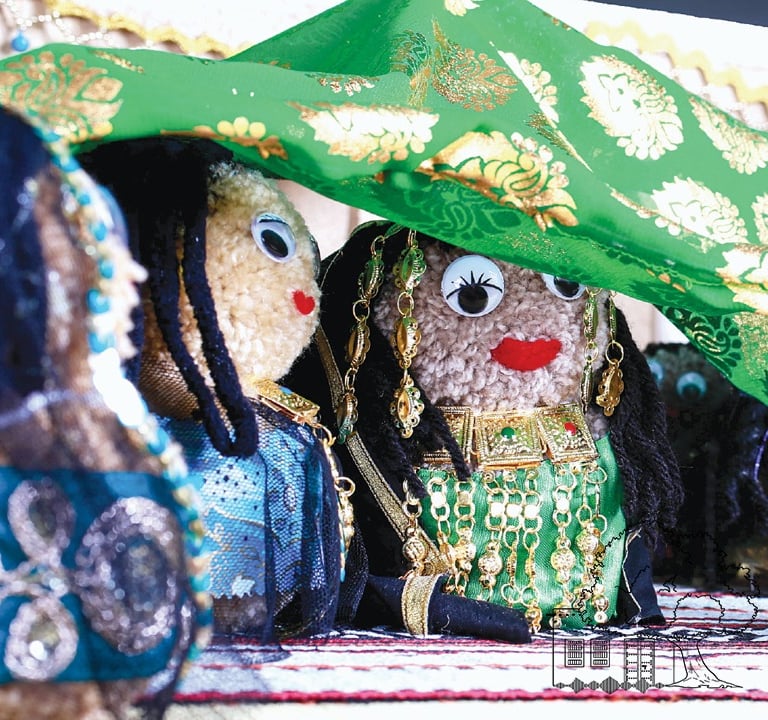
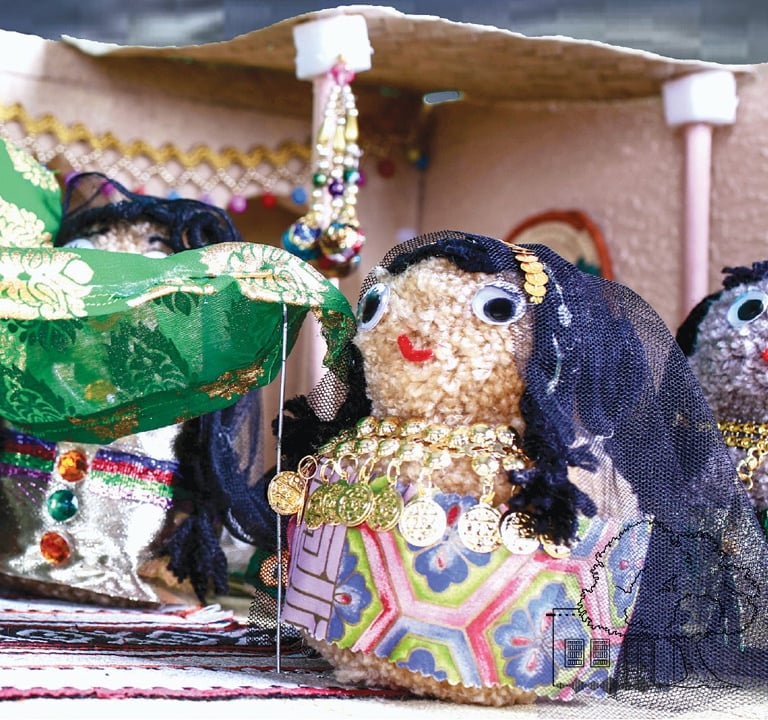
The groom's procession:
After the marriage contract is concluded in the bride's father's house, the groom is then escorted on foot to the bride's house by his family and friends, carrying torches in their hands and singing songs specific to the procession. The songs accompanying the procession are known as the Samri art and other ancient arts, until the wedding procession reaches the bride's house in a beautiful procession led by the groom, his father, his relatives, the elderly, the youth and the children. As soon as the wedding procession reaches the house, the women sing, put on their abayas and cover their faces before the men enter. Then the groom is secluded with his relatives after being congratulated by those who accompanied him in the procession. If the groom is brought in to the women, there is the sound of drums beating and rosewater scattering over them. Then those who were with him from his family disperse, leaving the groom so that the bride can be brought in to him.

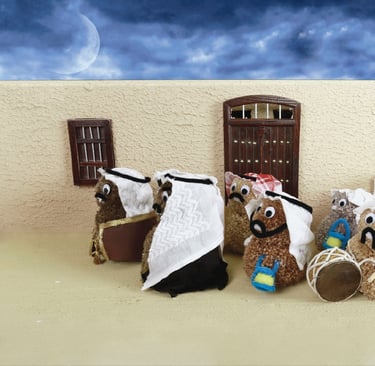
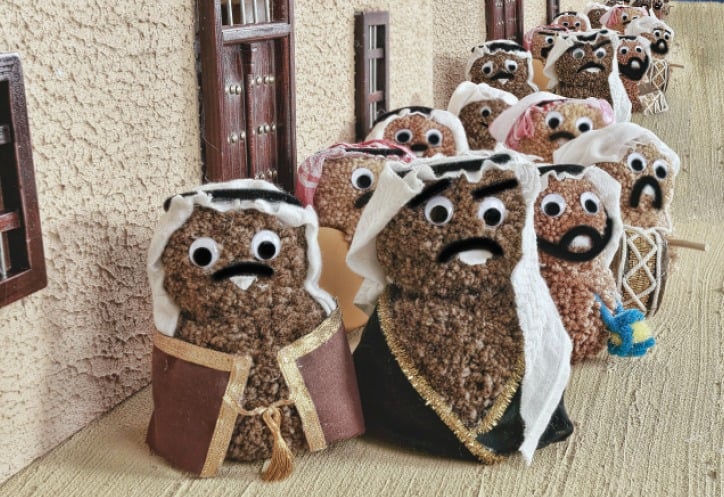

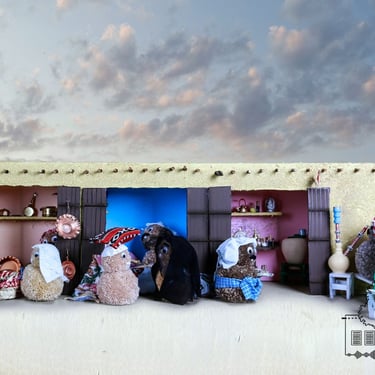
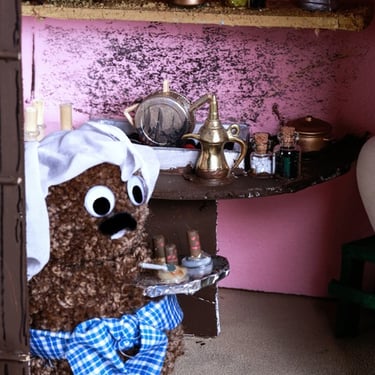
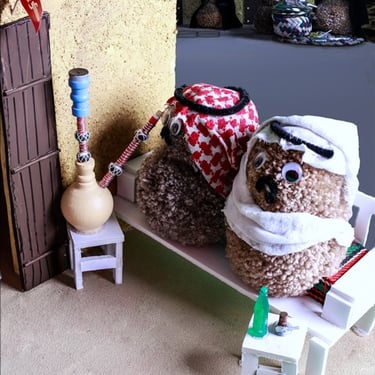
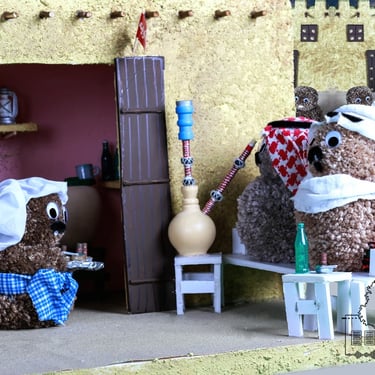
Coffee
Kuwaitis knew coffee shops, or as they were called (coffee), and their furniture was primitive, such as wooden chairs and small tables, and the coffee shops served only Arabic coffee. Coffee shops increased and spread, especially in Safa Square, which is in fact a commercial area for those coming from the desert, Basra and some of the distant Kuwaiti villages. These coffee shops bring together a good number of citizens to spend their free time and exchange conversations and news (news of the country). One of the most important coffee shops in the past was Bunashi Coffee Shop.



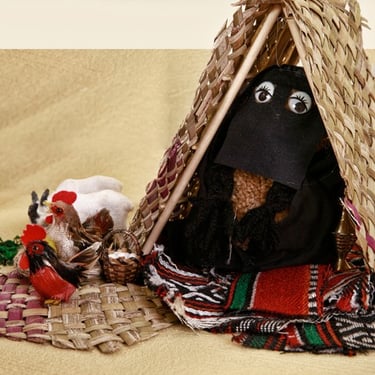
Al-Ammariyyah
Al-Ammariya: A trellis made of palm fronds, commonly seen in the old Gharballi market. Its purpose was to protect the seller from the sun. It was mounted on two wooden poles and at the end of the day, the seller would carry it with him. It was important for caravans coming from the desert, where they would sell ghee, clotted cream, locusts, truffles, wool, jujube, and some desert plants with medicinal uses.
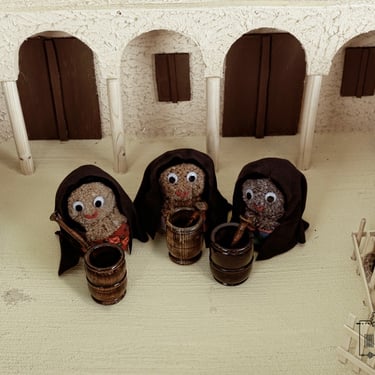

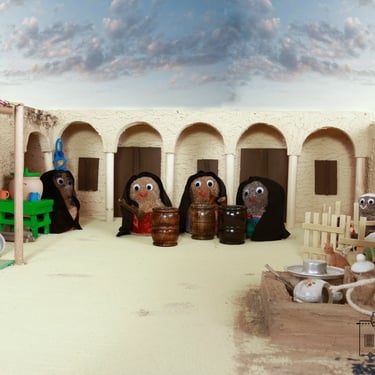
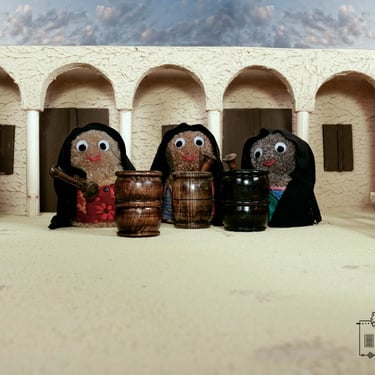
Customs during the Holy Month of Ramadan
Pounding Harees:
Harees is ground wheat grains in preparation for Ramadan. Kuwaiti families would make sure to buy large quantities of grains during Ramadan and then invite a team of specialized women to prepare the harees while performing expressive movements to the tunes of songs performed by a female band. Before Ramadan, specifically in the month of Sha'ban, women would gather either as a group or individually and place the grains in a wooden cylindrical container called (al-Manhaz). The container is approximately one meter long, hollow from the inside and has a long wooden handle known as the hand. After placing the grains inside the Manhaz, the process of beating the grains begins until they reach the stage of grinding and crushing them. This process is accompanied by singing rhythms and expressive movements that are considered work songs to facilitate the arduous process for the women. If the family is well-off, they would bring more than one Manhaz. If the family is poor or middle-income and does not have a Manhaz, they would take the harees grains to any house that has one and use it, taking the required quantity without any embarrassment. Solidarity and kindness were characteristics of the people of Kuwait in the past and, thank God, in the present. The song that accompanies the pounding of harees is:
يالله يابنيه ، يالله يابنيه
يالله يابنيه ، يالله يابنيه
يالله يابنيه ، يالله يابنيه
يالله يابنيه ، يابريم ياهو
This is clearly a supplication to God Almighty in the strength women have in their singing to perform and complete the arduous work.
Ramadan Bricks (Al-Warda):
The word "tob" is a Turkish word meaning cannon, and the iftar cannon is called "al-warda" in the local Kuwaiti dialect. The iftar cannon is a historical tradition that began in Kuwait during the reign of Sheikh Mubarak Al-Sabah. Regarding the history of the use of the iftar cannon in Kuwait, astronomer and historian Adel Al-Saadoun mentions in his book (Encyclopedia of Pioneers) that Ali bin Aqab Al-Khazraji was the first to fire the Ramadan cannon in Kuwait, and he learned how to shoot the cannon from the Ottomans. He added that the site of the cannon is called "Saif Al-Tob" and is currently the site of the Ministry of Foreign Affairs next to Seif Palace. A flagpole (al-Bandira) was located next to the cannon. One of the favorite memories for the people of Kuwait is the daily gathering of young people and children before sunset to watch the firing of the iftar cannon. In the past, those gathered would shout "Allahu Akbar" and "Tahlil" when the cannon was fired. After the firing, everyone would go home to eat the iftar meal.
Gargee'an:
Kuwaiti heritage researcher Dr. Yaqoub Al-Ghunaim said that Gargee'an is a popular word that means a mixed and varied dish consisting of mixed nuts and some sweets. It is also said that the name is derived from the word "Qarq'a," which means making sounds from solid materials, such as the sound of iron pots carrying sweets and some drums played by children. Dr. Al-Ghunaim added that the Gargee'an market used to begin in the candy market located in the middle of Kuwait's traditional markets, where shop owners would display their goods in their windows due to people's eagerness to buy. He explained that Gargee'an was a favorite occasion for children in the past, who would eagerly await it and prepare for it in neighborhoods and alleys, knocking on doors and houses opening to receive them. They would gather in groups of boys and girls, separately. He mentioned that the boys would repeat (Gargee'an, oh God, keep their son safe, oh God), while the girls would repeat (Gargee'an, oh short verse, oh Ramadan). Families and people would take care to prepare for Gargee'an and share their feelings of joy with the children and instill a spirit of intimacy among people. Mothers would sew Gargee'an bags from burlap, excess cloth, or remnants of old clothes and hang them around the neck, known as (the map), to collect what the people would distribute. He indicated that in the past, it was not only children who (gargee'an), but also some young men who carried drums and tambourines, and spontaneous, funny disputes would often break out between them on one hand and the children on the other. The researcher in astronomical folklore, Adel Al-Saadoun, says that after the iftar period is over, they start moving around the neighboring houses wearing traditional clothes, where the girls wear the dir'a and the bukhnq and decorate themselves with some henna. Al-Saadoun added that the boys would wear the dishdasha, some of them would wear the ghutra, and some would wear a light jacket. They would carry a cloth bag that was hung around their necks. Some of them would carry drums, empty boxes, and copper pots and would beat them with a stick or a stone to get the Gargee’an (May you return to it every year and fast it). Gargee’an has different names among children in the Gulf countries, including (Gargee’an - Garangao - Garanqasho) in Kuwait and Saudi Arabia, (Gargee’an) in the Sultanate of Oman, and (Haq al-Layla) in the Emirates.
Girls' Song:
قرقعان وقرقعان
بيت قصير برمضان
عادت عليكم صيام
كل سنه وكل عام
يا الله سلم ولدهم
يا الله خله لامه
عسى البقعه ما تحمه
ولا تواري على امه
عطونا الله يعطيكم
بيت مكه يوديكم
يا الكعبه يا العموره
يا أم السلاسل والذهب والنوره
As for the boys or girls, their chants are limited to a syllable or half a syllable that they repeat to announce their request for their share of the (Mukhtalat) or Qirqian, which is:
سلم ولدهم .. يا الله
خله لامه .. يا الله

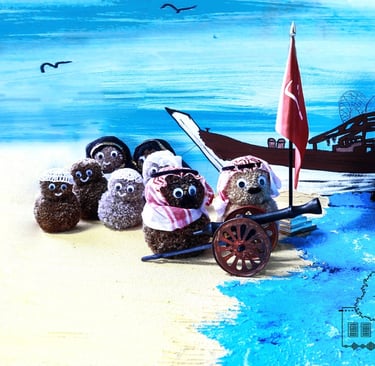
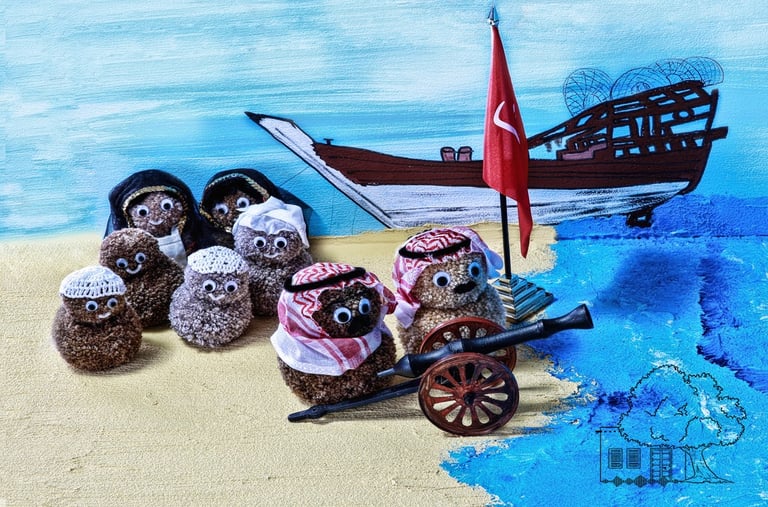

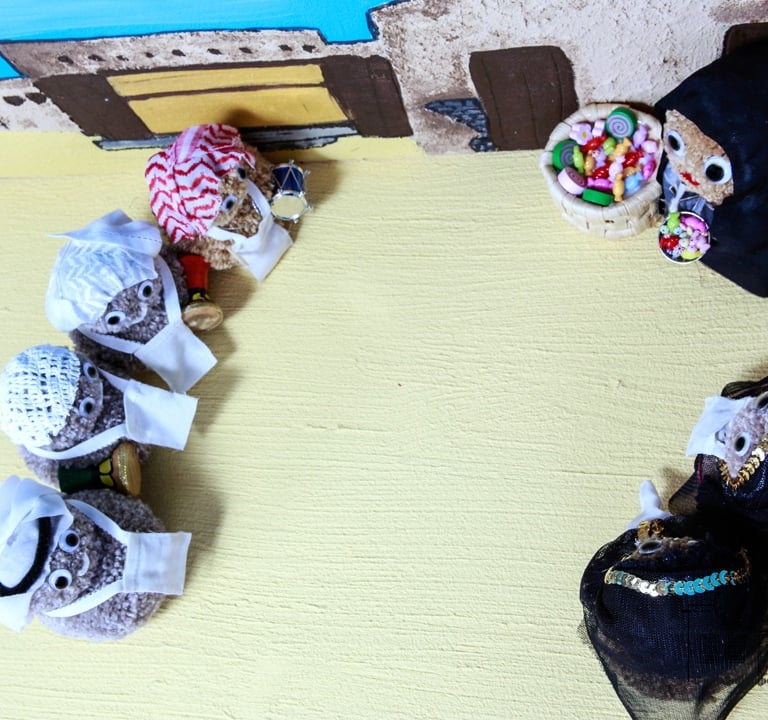
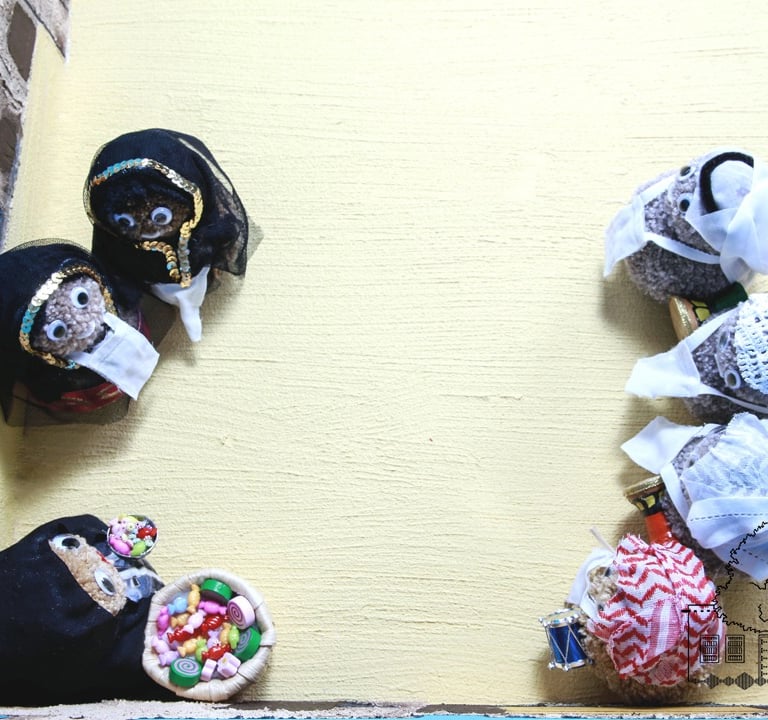
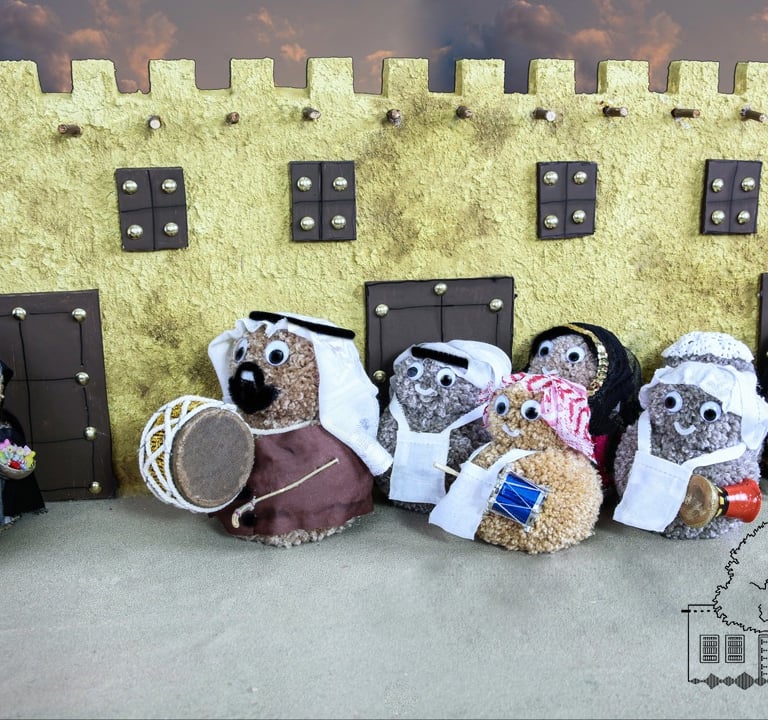
The Sea in the Past
حية بية Haya BayaIt's a tradition practiced by children in ancient times on the ninth day of Dhul-Hijjah (the Day of Arafat), where they throw "al-Hayya Bey," a small basket containing barley or garden cress seeds. When the grass grows, the children go to the sea to throw it while standing on the seashore. Together, they chant the song "al-Hayya Bey," which begins
حية بية.. راحت حية.. ويات حية.. على درب الحنينية
يا حيتي حيي بي.. بيت مكة دقي بي ..
اشربي من ماي زمزم.. وادعي لديارنا تسلم..
حية بية.. راحت حية.. ويات حية.. على درب الحنينية..
يا رب أعيادنا دوم ..... فرحة عدونا في البحر طابعة..
عشيتج وغديتج نهار العيد لا ادعين علي..
حية بية.. راحت حية.. ويات حية.. على درب الحنينية..
ياحيتي غديتج وعشيتج ونهار العيد قطيتج ..
مع السلامه يا حييتيه.. أمنتج اللّٰه وبري ذمتيه..
In the song, the child asks that his snake be a witness for him and not curse him. This is the meaning of "La Da'in Ali," because he fed and nourished it (Ghaditaj wa A'shitak). He then reminds his snake that while he cares for it, he will throw it into the sea; this is what the word "Qatitaj" means. Each child then throws their snake as far into the sea as they can.
It is said that the origin of the word "Hayat Baya" is "Al-Hajji Baiji," as Kuwaitis and Emiratis say, meaning that the pilgrim will come after the Hajj season ends.
Thus, the children and their families spend a fun, social day on the beach singing the famous "Hayat Baya" song. The children learn how to care for their own needs and sacrifice what is most precious to them for their families.
Washing Clothes:
In the past, washing clothes was a laborious process, using water and a detergent derived from the local environment, including: Shanan, Arad, Clay, and Haradh. In the past, Gulf women would wash and squeeze their clothes after rubbing and beating them well on the rocks using a wooden beater with one of the detergents. They would make sure to shake them well and then spread them out to dry. Women usually went to the beach to wash clothes and household items. Shaking out clothes helped to straighten them and get rid of wrinkles. Clothes made of thin fabrics were left without wringing, but were simply spread out and left to dry. They were then stretched and straightened by hand until they took their natural shape. They were then folded and sprinkled with perfume or smoked with incense and stored in a designated place.
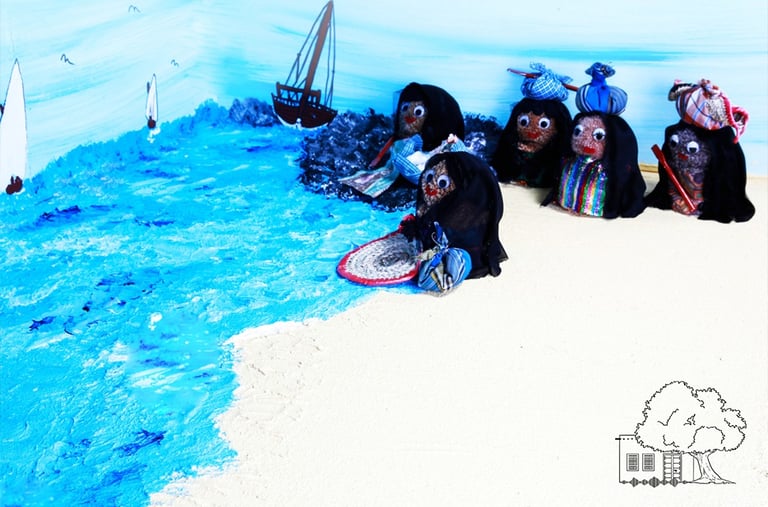

Top Top Ya Bahr:
Everyone has heard this song, and some of us don't know why it's said.
This song was sung by women in the past, about three or four weeks (a month) before the return of the bride. The return of the bride is a very important day, especially for families with children or husbands. They eagerly await their return home. As mentioned, women and girls sing the song before the return of the bride, provided it is after sunset.
They gather around the square. A strong, energetic woman, responsible for all the women, oversees the singing. The remaining women gather to gather firewood and palm fronds, using them to light a fire. They then stand in a moving circle and chant some of the most important songs and chants, the most important of which are:
توب توب يابحر، توب توب يابحر، اربعه الخامس دخل
جيبهم طالبينك جيبهم ، ماتخاف من اللّٰه يابحر يااللومي هات بن رومي ، يالقاز هات بو قماز ياللين هات ونيان ، يالتمره هاتي حسين وخمره يالرمان القطيفي هات عبد اللطيف
يالدانه جري شملان من اذانه يالجوهره هاتي حسين من بحره وماتخاف من اللّٰه يابحر
ويالجبريت هات محمد العفريت
And oh Al-Jabrit, bring Muhammad Al-Afreet. Muhammad Al-Afreet mentioned in the song is the son of the late Sabtwa, may God have mercy on her, the well-known woman who used to work as a tob tob ya bahr in the past. What is meant by the “afreet” is (the devil). After the late Sabtwa came another woman, the late Aliya Al-Ba’arki, who was blind and she was the last woman who used to work as a tob tob ya bahr in the era of Sheikh Ahmad Al-Jaber, may God have mercy on him. Hussein bin Ali and Shamlan were mentioned - Al-Rumi Rashid bin Ahmad, the pearl diving prince - Abu Nayan - Abu Rasli - Al-Mannai Abu Qamaaz, who were pearl diving merchants and captains in the past. The purpose of this song is to frighten the sea, discipline it and threaten it, because it is the reason for their separation from their families, which lasted for days and nights. They believe that by frightening it, their families will return safe and sound, bearing pearls and good things, carrying. The reason for them carrying burning palm fronds is a funny reason that calls for strangeness!! This is why they express all their feelings, emotions, separation, etc. in their chests and hearts. They used to beat the sea and burn it with fire (cauterization) so that it would feel the anguish they felt and the pain of separation. They would take a cat with them, put a piece of misham around its neck, and one of the women would dip it in the sea several times with the intention of defiling the sea with it. It would scream (miaw miaw miaw) and all the women would respond, “Yaw yaw yaw” (meaning they came... they came).
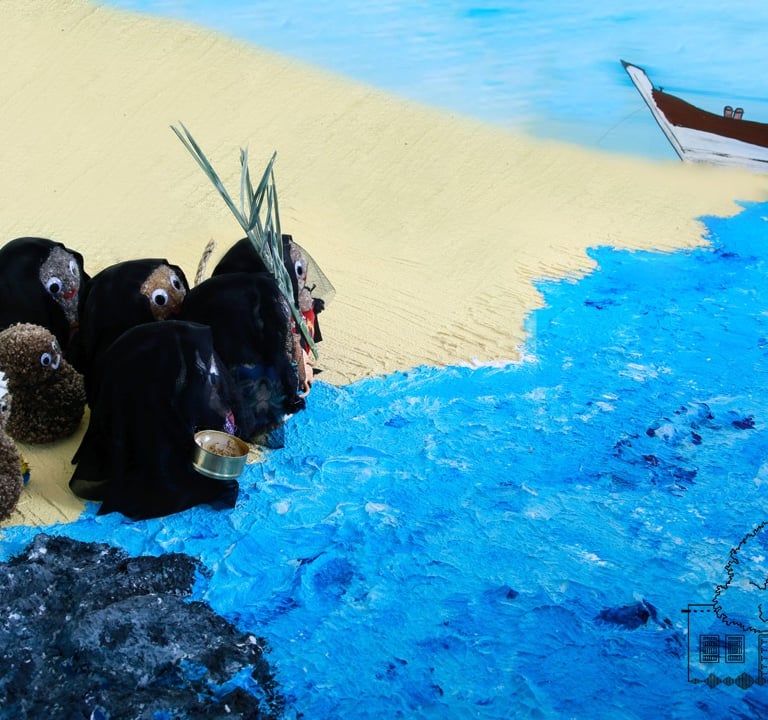
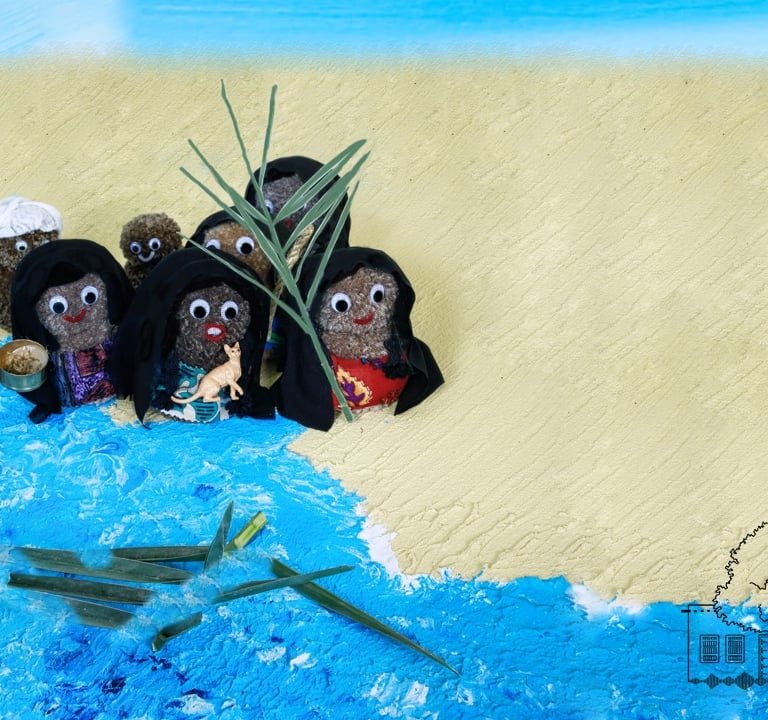
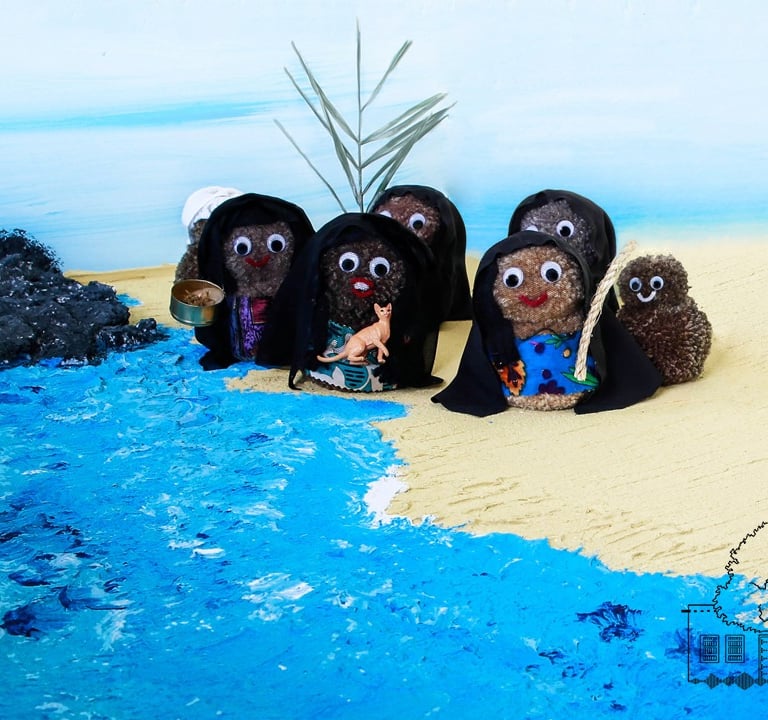
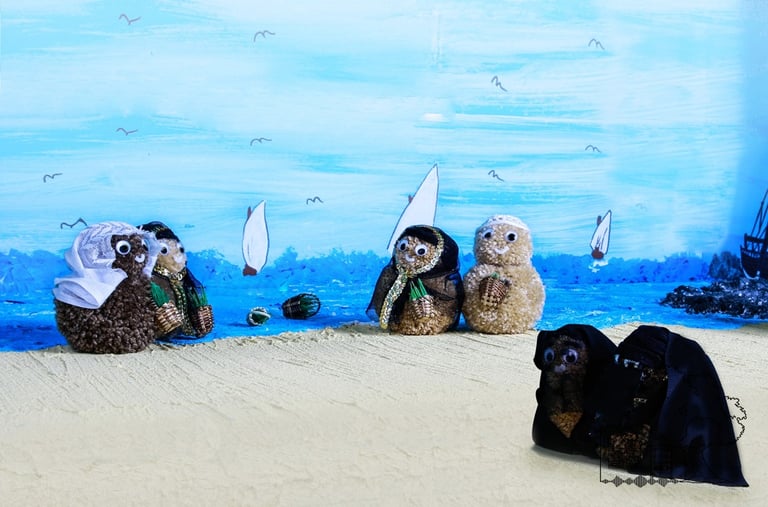

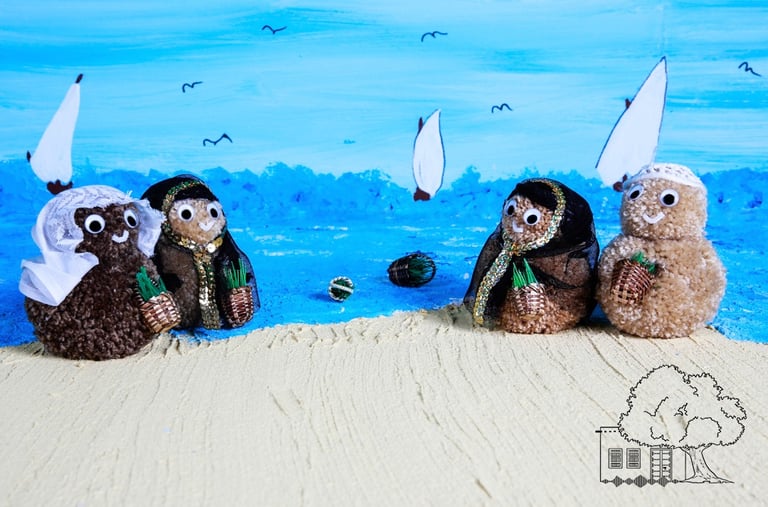

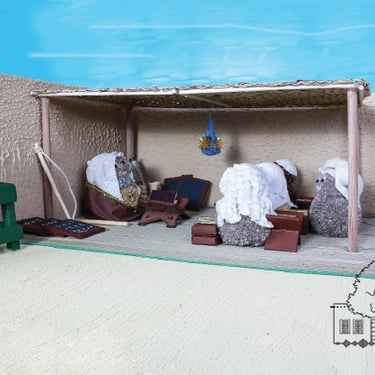
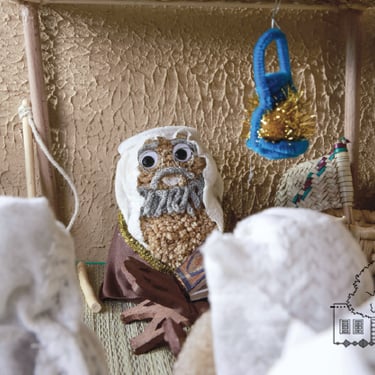
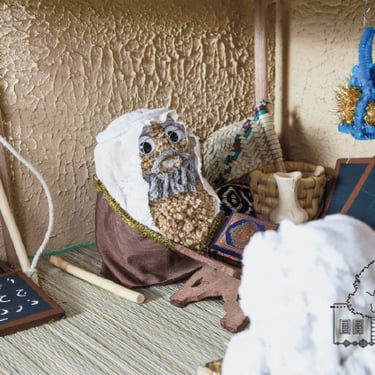
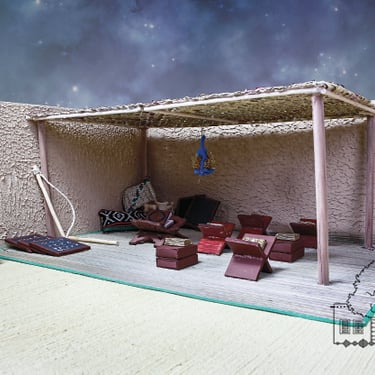
Al-Mutawa - The Seal and the Ring Procession
Al-Mutawa: Before the encyclopedia was established and government schools spread throughout Kuwait, there were some private schools that taught the Holy Quran, the Islamic religion, and the basics of reading, writing, calligraphy, and arithmetic. These schools were supervised by a person called the Mullah or Mutawa, who would provide assistance when needed in the form of teachers (tawwa'a and malalwa). At that time, the school was a small, old house owned by the Mullah or rented at a very low price. He would furnish it with primitive furniture and supplies, such as rugs and mats for sitting on, buckets for drinking water, some black wooden boards for writing, and the Mullah's chair. People would bring their children to these schools and would haggle with the Mullah about the type of wages. Some would pay him a monthly salary for his father, called a "monthly" salary, while others would agree on a fixed wage, called a "qutu'a," paid after completing the Quran recitation.
Khatmah Al-Khatam: What a happy occasion! It is the occasion of completing the recitation of the Quran with all its parts. After one of the boys completes the recitation of the Quran under the supervision of the Mullah, he is called (the Khatim). If his family is rich, the Mullah’s family holds a feast and a celebration without them noticing. However, if he is poor, his family holds a wonderful celebration for him due to their abundance. They provide him, by borrowing, the sheeb, the agal, the bishtiya, and the small agal from his hand. With all his majesty and dignity, he is accompanied by his son, his mother, and his friends, the Mullah’s friends, in his school, where the boys, teachers, and their families have gathered to receive the beautiful procession. As soon as we stand before the Mullah, he puts on the Khatim and the Mullah sits on his small chair, and the Khatim sits next to him on another chair with a majestic appearance, where roses and perfumes are scattered on those present. The Mullah holds the Khatim’s hand to announce and clap his hands in joy for the occasion. A comprehensive party is held in which the boys and students, big and small, take their share of the roses and incense after To take his share to feed his family and relatives, then he ordered all his students to leave in honor of this happy occasion.
The Praise:
الحمد لله الذي هدانا للدين والاسلام . اجتبانا
سبحانه من خالقا سبحانه بفضله علمنا القران
نحمده وحقه أن نحمده ما فتق الزهر وما طاح الندى
ثم الصلاة على الهادي محمدا على الذي قد جاء بالهدى محمدا
هذا غلام قد قرأ وقد كتب وقد تعلم الرسائل والخطب
ولا تقصر يا ابن اشراف العرب ولا يكن طرفك هما وغضب
علمني معلما ما قصر رددني في درسي وكررا
إني تعلمت كتابا اكبر حتى قرأت مثله كما قرأ
جزاك الله يا والدي الجنانا وشيد الله لك البنيانا
في جنة الخلد مع الولدانا
اعطوا المعلم حقه عظيما لانه كان بنا رحيما
الحمد لله الحميد المبدي سبحان له طير السماء والرعد
بأتتك طير يا طيور المهدي مخطبا بالريش حسين القد ……. الى اخر الابيات
